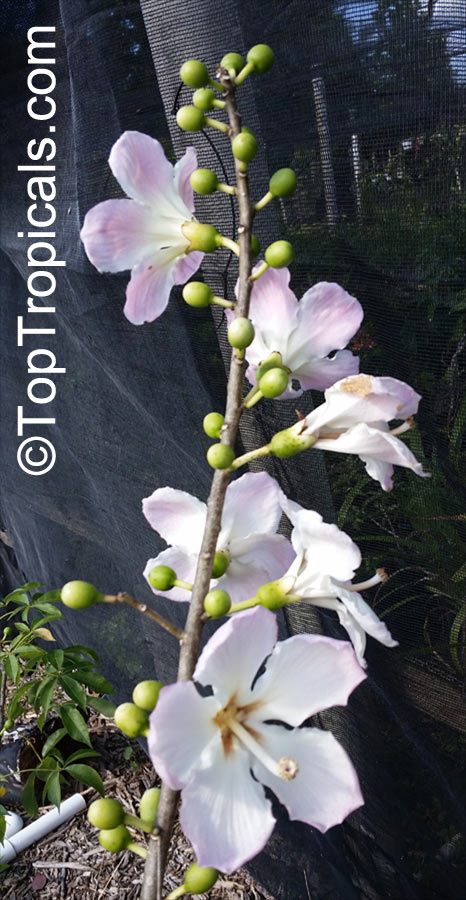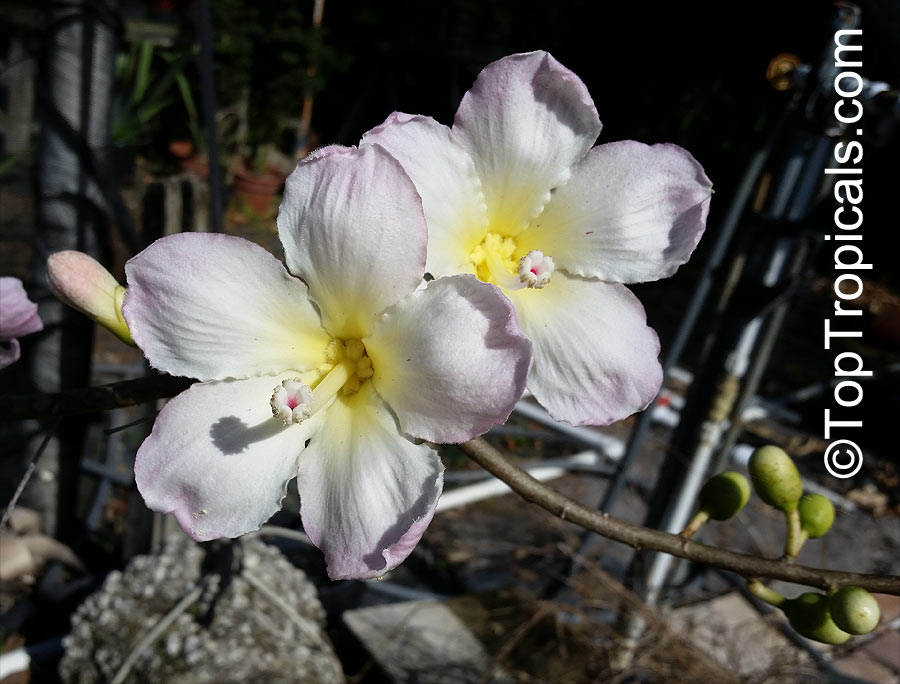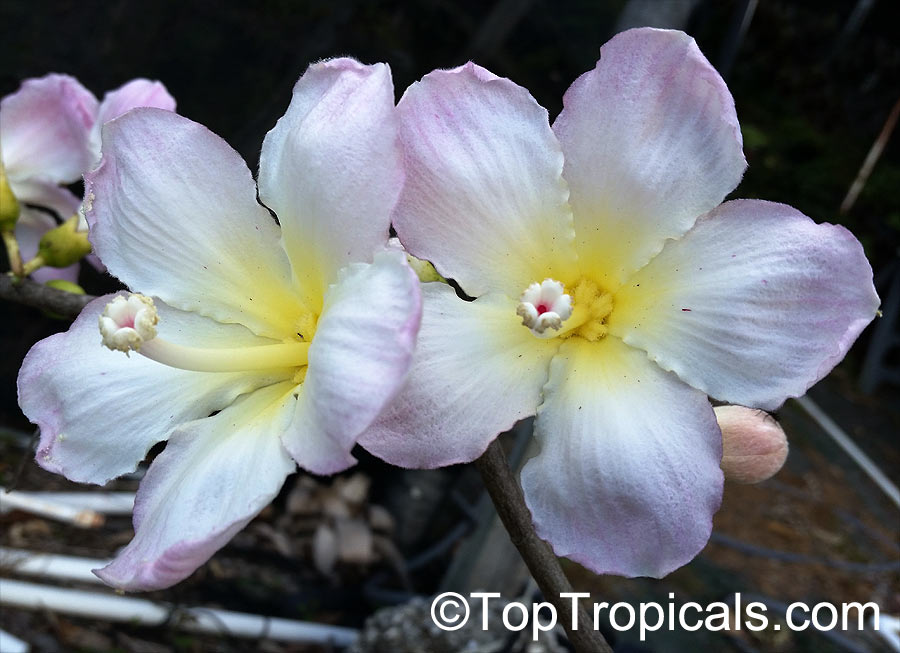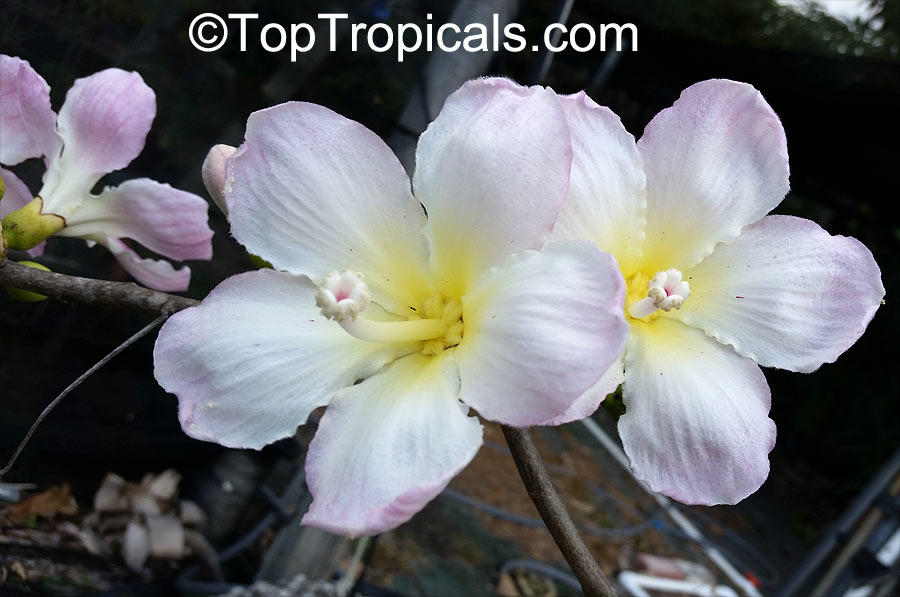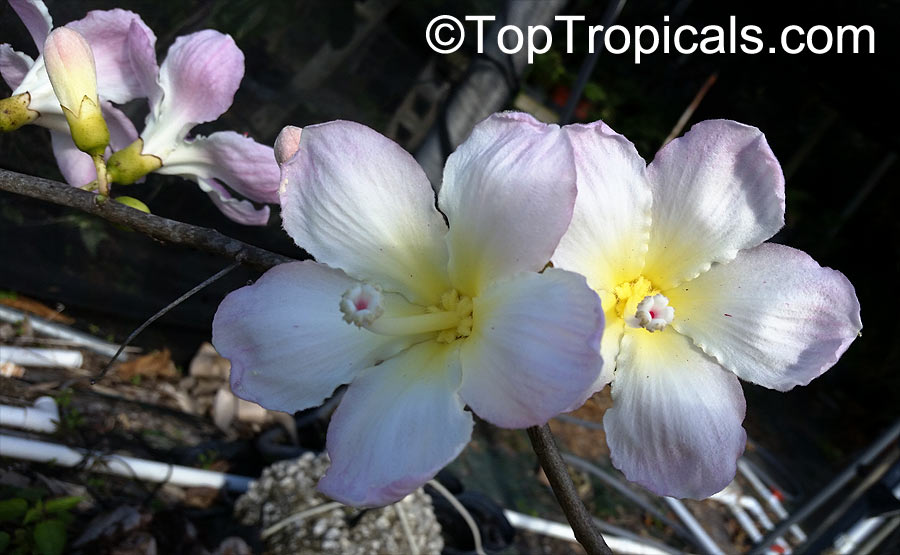Ceiba sp. (Ceiba)
Top Tropicals Plant Encyclopedia
Botanical name: Ceiba sp.
Common names: Ceiba, Floss Silk Tree, Kapok Tree
Family: Malvaceae (Formerly:Bombacaceae)
Subfamily: Bombacoideae
Origin: Central America, Southern America









Due to their size, Ceiba trees are mostly seen as a symbol of strength and are often associated with ancient cultures and beliefs, such as Mayan mythology. However, this majestic species can also be appreciated for its beauty. The plant typically produces large clusters of showy seed pods, which, in turn, develop flowers of different colors. Depending on the species, the flowers can be white, off-white, pink, red, crimson, vinous, yellow or even orange.
Ceiba is a deciduous tree and some varieties are known to possess thorns or spines. This genus of plants prefers to grow in full sun and with moderate water. Ceiba trees can adapt to a variety of different climates. Most species are rated at USDA Zone 9 to 11.
Growing Ceiba trees in pots while in cold climate areas is possible. The container should be shallow and wide to accommodate the long taproot. Choose one that is large enough to hold the actual size of the tree. Place your Ceiba in a sunny location and water regularly. Keep in mind that this plant is fairly drought-tolerant so do not over-water it. Ceiba trees should be well drained as to avoid root rot. Every two to four weeks for mature plants, apply a water soluble fertilizer diluted to half strength to give it an extra boost of nutrients. Be aware that the tree can easily outgrow its pot and will require re-potting.
In conclusion, Ceiba sp. is a majestic plant often associated with strength and ancient cultures. Its size is impressive with some species growing up to 250 ft. Its white, off-white, pink, red, crimson, vinous, yellow or orange flowers come in large clusters and are quite attractive. Finally, depending on the climate, Ceiba can be successfully grown in a container, requiring full sun exposure, moderate water and regular feeding with a water soluble fertilizer.
